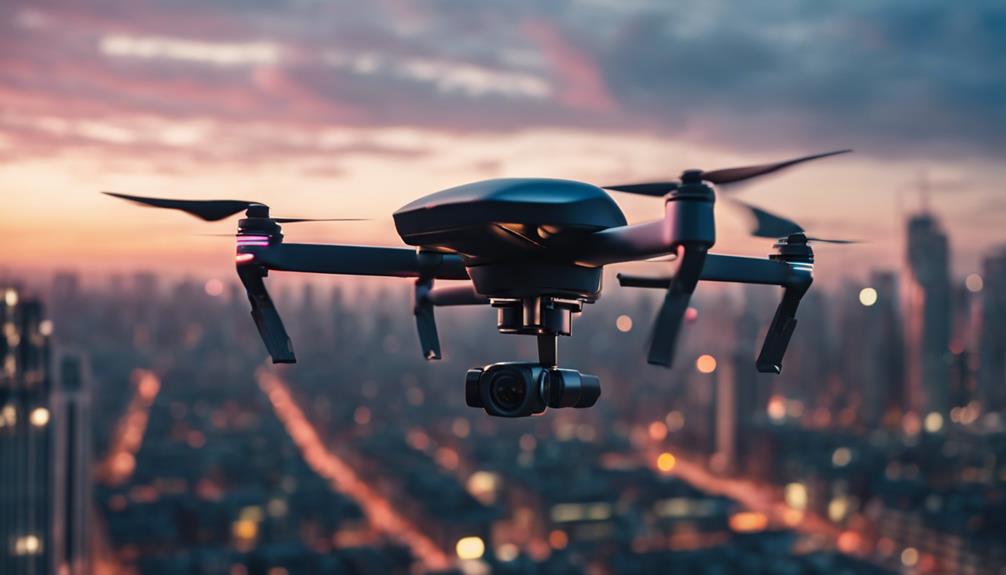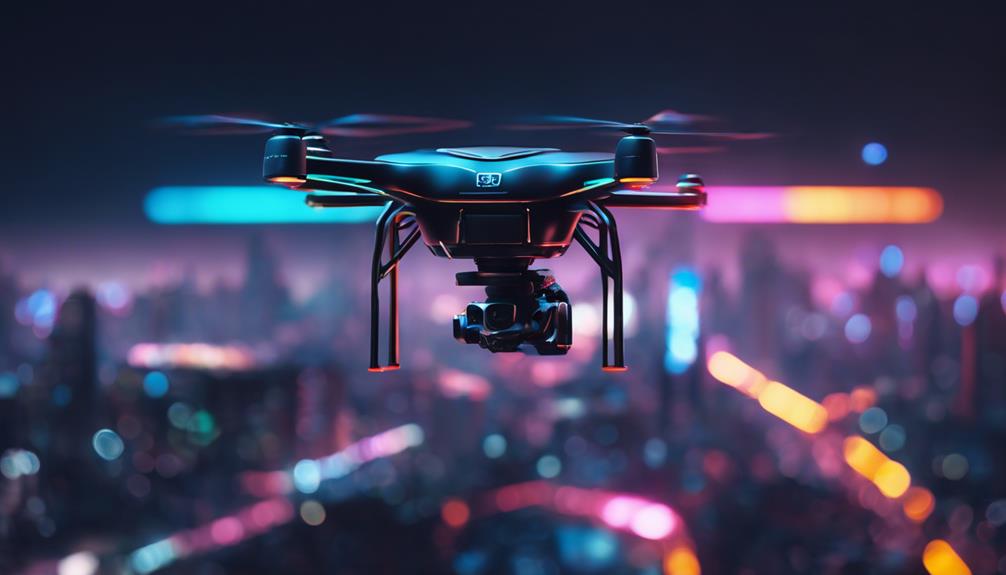
In an age where surveillance technology has become increasingly sophisticated, the rise of nano spy cameras represents a significant leap in both capability and accessibility. These miniature devices, often no larger than a coin, have transformed the landscape of personal security, covert monitoring, and undercover operations. While they can serve legitimate purposes such as security and surveillance, they also raise important questions about privacy and ethics. Understanding the intricacies of nano spy cameras, from their functionality to their applications, is essential for anyone considering their purchase and use.
As technology continues to advance, nano spy cameras are becoming more prevalent in various industries and personal settings. They embody a blend of cutting-edge tech and practical utility, making them an attractive option for anyone needing discreet monitoring solutions. Whether for home security, personal safety, or professional surveillance, these tiny cameras pack a powerful punch, making them a notable presence in modern surveillance systems.
The Rise of Nano Spy Cameras: What You Need to Know
Nano spy cameras have surged in popularity over the past decade, primarily driven by advancements in miniaturization and wireless technology. Once limited to dedicated professionals, these devices are now accessible to the general public, empowering individuals to monitor their environments discreetly. Their compact size allows them to be easily concealed, making it almost impossible to detect them in various settings, from homes to offices.
The growing concern for personal safety and security is a significant factor in the rise of these devices. As crimes such as theft and vandalism continue to challenge homeowners and business owners alike, the demand for innovative surveillance solutions has never been higher. Nano spy cameras present a perfect balance of functionality and discretion, catering to individuals’ needs for peace of mind without compromising their privacy.
How Nano Spy Cameras Work: A Technical Overview
Nano spy cameras utilize advanced imaging sensors and miniaturized lenses to capture high-quality video and audio. Most models are equipped with features such as motion detection, night vision, and wireless connectivity, allowing users to monitor live feeds through smartphones or computers. This technology enables seamless integration into the digital ecosystem, making it easier for users to access their surveillance footage in real-time.
Additionally, many nano spy cameras operate on rechargeable batteries, making them highly portable. The inclusion of microSD card slots allows for local storage of footage, while cloud storage options provide an extra layer of security for recorded material. With encryption technology becoming more prevalent, users can feel more secure knowing their footage is protected from prying eyes.
Top Features That Make Nano Spy Cameras Stand Out
One of the standout features of nano spy cameras is their ability to record high-definition video, often reaching resolutions of 1080p or higher. This quality ensures that footage is crisp and clear, making it easier to identify faces and details even in low-light conditions. Coupled with features like wide-angle lenses, users can cover larger areas without the need for multiple cameras.
Moreover, many nano spy cameras are designed for ease of use. With user-friendly interfaces, apps for monitoring, and straightforward installation processes, even those who lack technical expertise can operate them effectively. Features such as remote access, real-time alerts, and cloud storage options further enhance their usability, making them an attractive choice for anyone seeking an efficient monitoring solution.
Real-Life Applications of Nano Spy Cameras Explained
Nano spy cameras have a diverse range of real-life applications, from home security to workplace monitoring and covert operations. In residential settings, homeowners use these cameras to keep an eye on their property, deter potential intruders, and monitor babysitters or caregivers. Their small size allows them to be placed discreetly around the home, ensuring continuous surveillance without drawing attention.
In business environments, nano spy cameras serve various purposes, such as monitoring employee activities, ensuring compliance with safety regulations, and preventing theft. They can also play a critical role in investigative work, providing evidence in legal disputes or insider threats. As they become more integrated into everyday life, the versatility of nano spy cameras has made them an invaluable tool across countless scenarios.
Choosing the Right Nano Spy Camera for Your Needs
When selecting a nano spy camera, it’s essential to consider your specific needs and the environment in which you plan to use it. Factors such as resolution, field of view, and low-light performance can significantly impact the effectiveness of the camera. Higher resolution cameras provide better detail but may require more storage space, so it’s essential to strike a balance based on your needs.
Another critical consideration is connectivity options. Some nano spy cameras offer Wi-Fi connectivity for remote monitoring, while others rely on local storage. If you intend to monitor your home while away, choosing a camera with real-time streaming capabilities may be beneficial. Additionally, look for features such as motion detection alerts, which can notify you of potential security breaches immediately.
Ensuring Privacy and Ethics with Nano Spy Technology
While nano spy cameras offer numerous benefits, they also raise significant ethical and privacy concerns. Users must be mindful of where and how they install these devices to avoid infringing on the privacy rights of others. It’s essential to familiarize yourself with local laws regarding surveillance and to obtain consent where required, especially in shared spaces or workplaces.
Moreover, manufacturers and consumers of nano spy cameras should advocate for ethical practices in their use. Establishing clear guidelines for surveillance can help foster trust and transparency within communities. By prioritizing ethical considerations, users can enjoy the advantages of nano technology without compromising the privacy of others.
Pros and Cons: Is a Nano Spy Camera Right for You?
Before deciding on a nano spy camera, it’s essential to weigh the pros and cons. On the positive side, these devices provide a discreet way to monitor and protect your home or business. Their small size, high-definition capabilities, and advanced features make them versatile tools for a variety of applications. Additionally, the ease of use and accessibility of these cameras can provide peace of mind for individuals and families alike.
However, there are downsides to consider. The primary concern remains privacy; unauthorized surveillance can lead to significant ethical and legal ramifications. Moreover, the potential for technology to be hacked or misused raises questions about data security. Understanding these risks is crucial for anyone considering the use of nano spy cameras.
Comparing Nano Spy Cameras: Brands and Models Reviewed
As the market for nano spy cameras expands, numerous brands offer various models, each with unique features. For instance, the ‘Blink Mini’ offers user-friendly app integration and cloud storage options, while the ‘Wyze Cam’ is known for its affordability and impressive features like night vision and motion detection. More advanced models, such as the ‘Reolink Go,’ come with rechargeable batteries and 4G connectivity, catering to users needing outdoor surveillance.
When comparing brands, it’s essential to consider the warranty, customer support, and user reviews to gauge the reliability and performance of the camera. Exploring side-by-side comparisons can help identify which model aligns best with your specific needs and budget, ensuring that you make an informed decision before purchasing.
Tips for Optimal Use of Your Nano Spy Camera
To maximize the effectiveness of your nano spy camera, positioning is key. Ensure that you place the camera in a location that provides a clear view of the intended area without obstructions. Avoid placing it in areas where it could be easily discovered or tampered with. Additionally, consider the lighting conditions and adjust the camera settings accordingly, especially if you are using it in low-light environments.
Regularly checking and maintaining your camera is also essential for optimal performance. Make sure to clean the lens to prevent obstructions and ensure your software is updated to keep up with security features. Finally, periodically review your footage to understand how effectively your camera is capturing the desired information and adjust its settings as necessary.
Future Trends in Nano Spy Camera Technology and Use
The future of nano spy cameras looks promising, with continuous advancements in technology paving the way for even more innovative features. The integration of artificial intelligence (AI) is one such trend, where cameras could utilize machine learning algorithms to differentiate between people, pets, and objects, enhancing the relevance of alerts for users. This can significantly reduce false alarms and improve overall monitoring efficiency.
Additionally, the demand for privacy-conscious surveillance solutions is rising. As consumers become more aware of their rights, manufacturers are likely to develop cameras with built-in privacy features, such as automatic shut-off or the ability to obscure recordings. These advancements will not only address privacy concerns but also broaden the appeal of nano spy cameras across different demographics and applications.
The rise of nano spy cameras reflects a growing interest in discreet surveillance solutions that prioritize usability and advanced technology. While they offer remarkable advantages for security and monitoring, it is vital to approach their use with consideration for ethical and privacy implications. Ultimately, whether you choose to invest in a nano spy camera will depend on your needs and the environment in which you plan to use it. By weighing the pros and cons and staying informed about best practices, you can make a decision that serves both your safety and ethical standards effectively.





